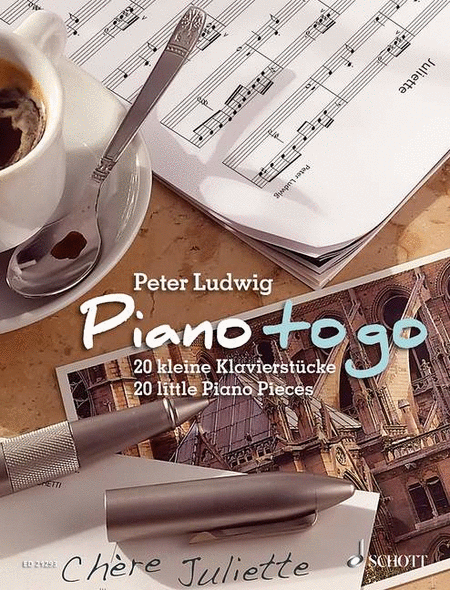Piano - easy to intermediate - Digital Download SKU: S9.Q14101 20 Little Piano Pieces. Composed by Peter Ludwig. This edition: Sheet music. Downloadable. Duration 18 minutes. Schott Music - Digital #Q14101. Published by Schott Music - Digital (S9.Q14101). 'Piano to go' is ideal for people who practically have no time to play the piano, who just have time to buy a coffee to go, but as long as it is still hot – for two, three minutes – they could well sit down at the piano and easily play two or three pieces from 'Piano to go'. The 20 easy piano pieces are aimed at lovers of the crossover between classical, pop, world music and tango. Each piece is so short that it can be played in passing, yet also so amusing that one may perhaps even forget about the coffee…Diese 20 leichten Klavierstücke wenden sich an Freunde des Cross-over zwischen Klassik, Pop, Weltmusik und Tango. Jedes Stück für sich ist so kurz, dass man es im Vorbeigehen spielen kann. Aber auch so amüsant, dass man vielleicht sogar den Kaffee vergisst….
